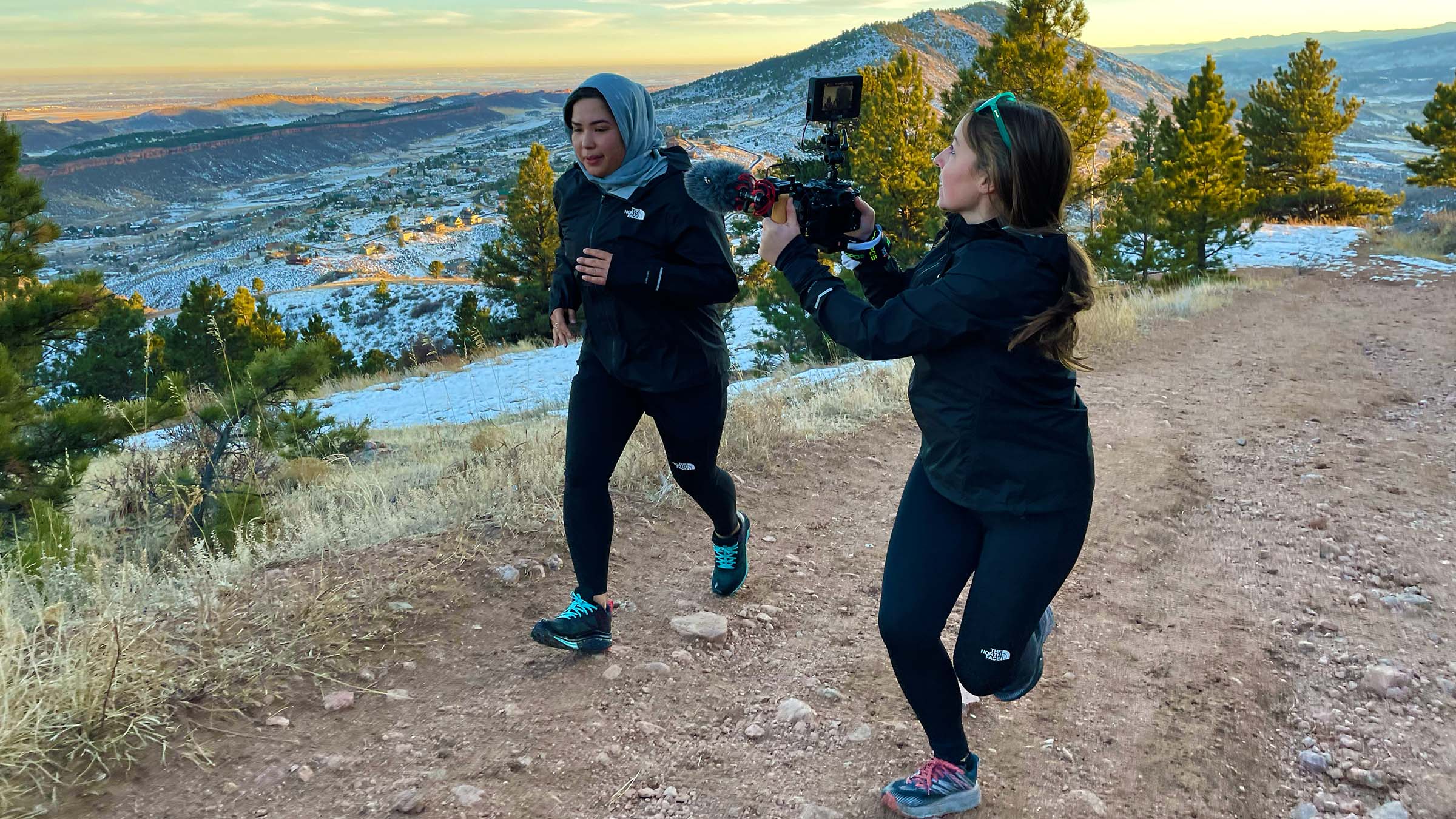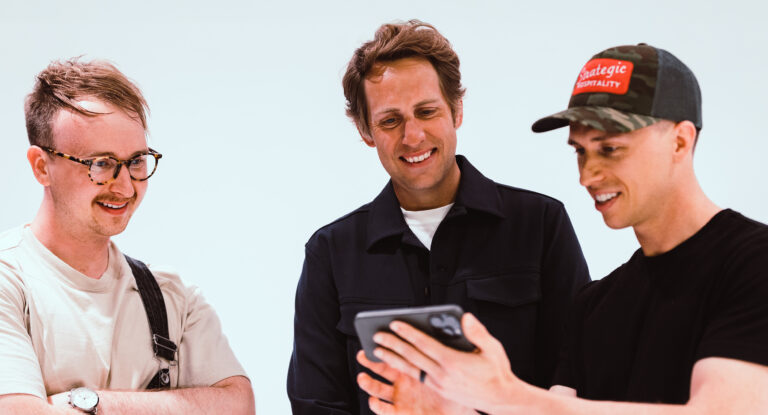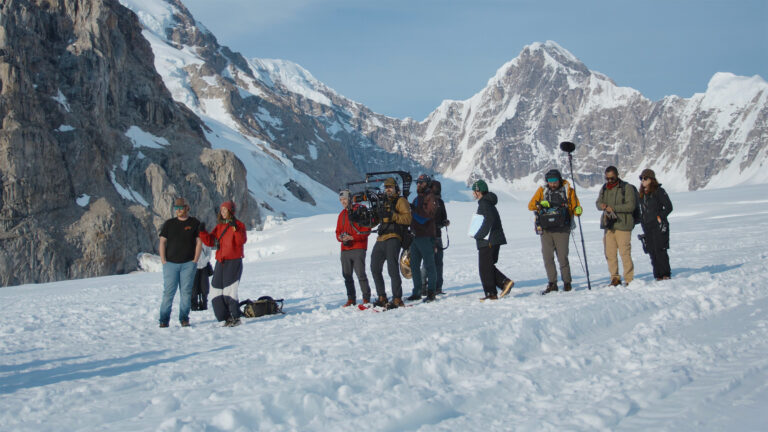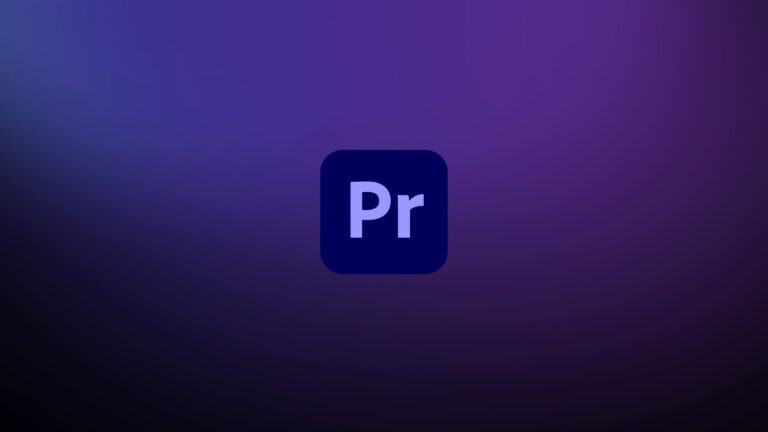Adventure stories are never complete without unexpected detours. But when UN human rights attorney Stephanie Case (@runningcase) began her side passion of ultramarathon running, she had no idea just how far off the beaten path she’d travel, and how close to actual life-and-death situations her road would lead her.
In today’s installment of Made in Frame, we follow her grueling journey from Kabul, Afghanistan to the Italian Alps. It’s all been poignantly documented by Dream Lens Media in Madison, Wisconsin, and artfully edited by the team at Bruton Stroube/Outpost in St. Louis, Missouri, for global brand The North Face in Free to Run.
Emotional journeys
Making “backpacking” accessible to non-technical climbers with their invention of the Ruthsac in 1969, The North Face takes its name from the sheer side of Yosemite’s Half Dome.
With a longstanding commitment to environmental and social causes—as well as to equality and diversity in sports—they sponsored the first all-female team to summit 25,504-foot Annapurna in 1978, which also happened to be the first successful American ascent.
Since then, The North Face has developed and manufactured technical apparel for climbers, skiers, and runners. And they’ve supported filmmakers documenting the extremely challenging endeavors of their brand ambassadors in a series of compelling films. From 2018’s Oscar winner for Best Documentary, Free Solo—featuring The North Face-affiliated free climber Alex Honnold—to Free to Run, the films they sponsor delve deeply into their physical and emotional journeys and take us along with them.
Extreme skills
If you’ve ever watched a behind-the-scenes account of how the stories of extreme physical feats are captured, what immediately strikes you is not just that you have an elite athlete climbing a 2,000-foot sheer rock face or, in the case of Free to Run, running 450km through the Italian alps and climbing the equivalent of four ascents of Mount Everest.
In addition to the athletes themselves, the documentarians are there along with them—and they’re not “just” climbing or running in those extreme conditions. They’re worrying about getting the coverage they need, making sure there are no technical glitches, and trying not to fall or hurt themselves or their gear. At a minimum. Because they’re also trying to capture novel angles or compositions while making necessary adjustments on the fly. But most of all, what they’re doing can’t interfere with what the athlete is trying to achieve, because it could literally be a matter of life and death.
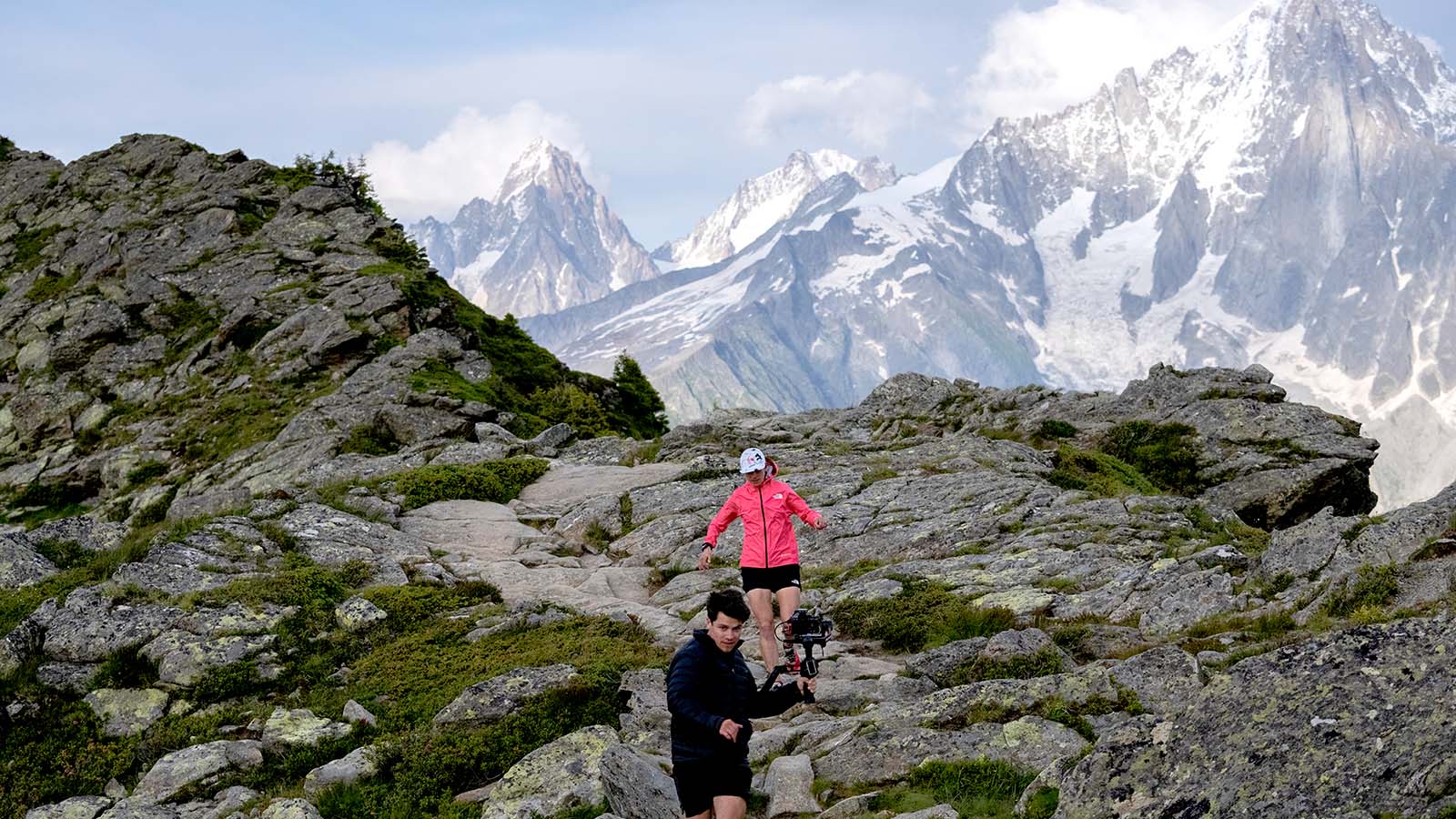
So if you want to be a filmmaker who covers extreme athletes, you kind of need to be one yourself—along with being so comfortable with your equipment and your craft that you go in with the confidence that you can get what you set out to—because there are no backup takes. The athlete is only going to do this incredible move in front of this incredible backdrop once.
There are no backup takes. The athlete is only going to do this incredible move in front of this incredible backdrop once.
Carrie and Tim Highman of Dream Lens Media are two such directors. Both athletes and outdoor enthusiasts, Carrie began as a news journalist after college, while Tim was more of an entrepreneur.
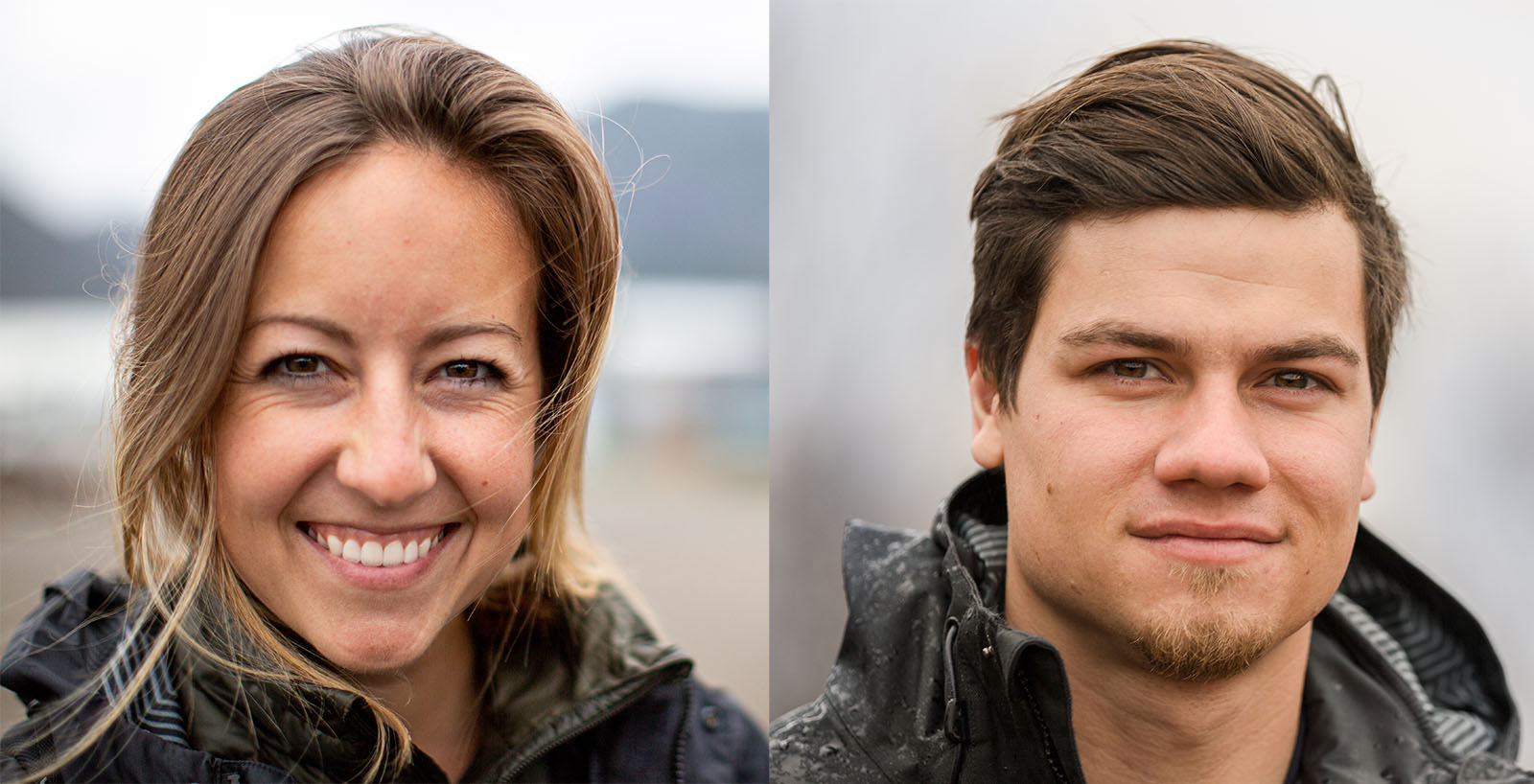
About seven years ago, the fledgling company created marketing material for their clients but, she explains, “Our heartbeat was really in documentary work. I’ve been passionate about telling stories about women in the outdoor space, because there are so many women doing incredible things that don’t always get the media and storytelling light shined on them,” she says.
One day, as Carrie was out for a run, an idea came to her. “I wondered what women in parts of the world do where it’s not safe enough to have this sort of freedom. I was pointed toward Steph and looked at her Instagram, watched her TEDx speech, and learned about Free to Run.”
A shared vision
That was in autumn of 2019. Carrie messaged Steph and they connected instantly. At that point, Carrie and Tim approached the project as a documentary feature centered around Steph’s work in Kabul for the UN and the development of the Free to Run NGO in 2014, designed to empower women in Afghanistan to run the way Steph and other women around the world could.
Their goal was to participate in a two-week run through the Wakhan Corridor in the summer of 2021, with women runners from all across the country. Separately, Steph intended to run the Tor des Glaciers in Italy in autumn of 2021, the most challenging of the Tor des Géants endurance trail races.
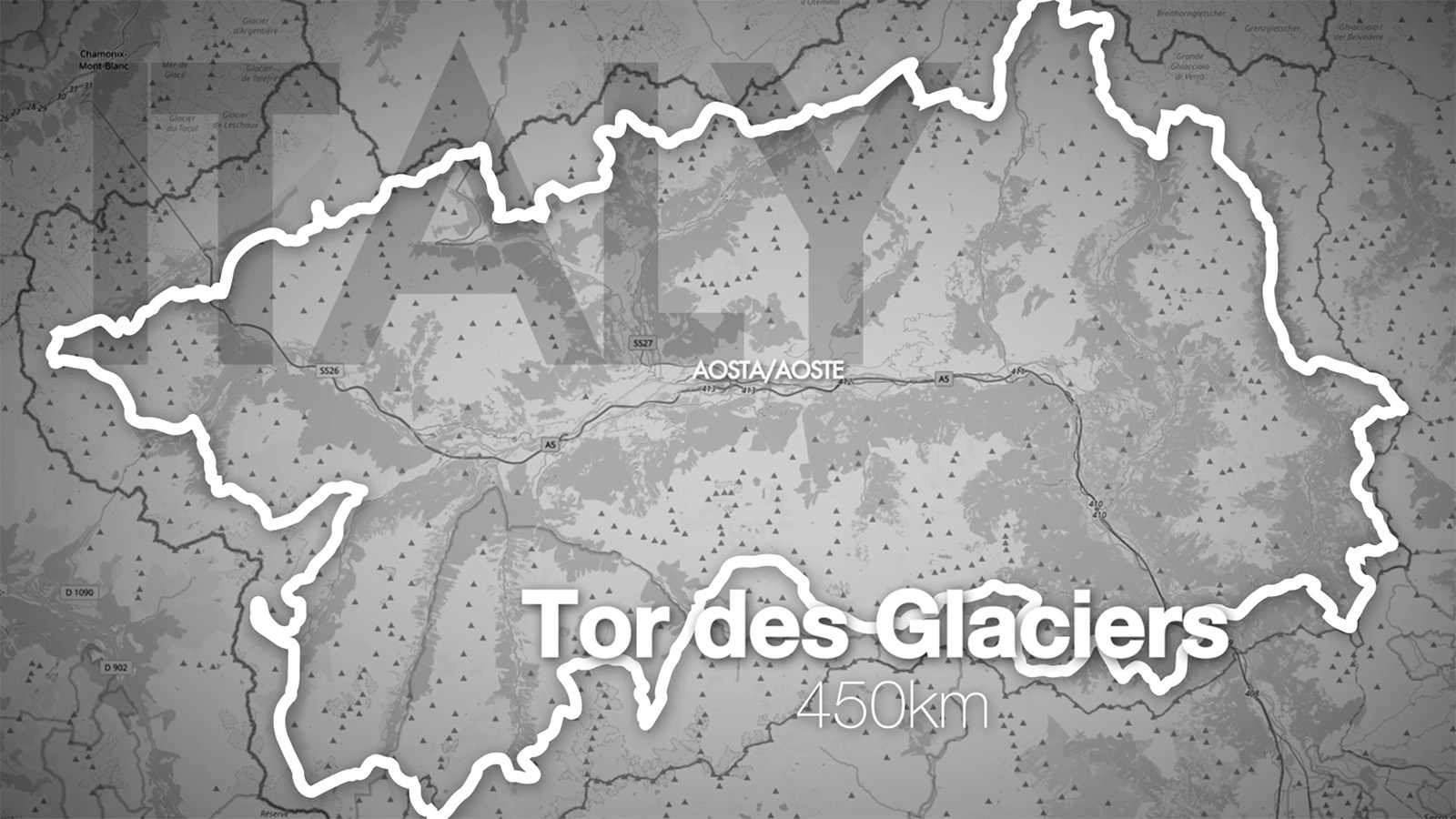
While they were conceptualizing the film, Steph became a brand ambassador for The North Face, and the team decided to pitch it to them. “It was a nice, natural conversation,” Carrie says. “It aligned with their campaign goals so it was a really good fit right away. We had already done a lot of work developing the story, and we had a lot of freedom to tell the story that was there.”
Carrie and Tim planned to travel to Afghanistan to shoot the expedition, going through all the steps to obtain visas and strategizing how best to cover the event. “We had to build a gear kit that could withstand being out for two weeks with no access to power or services,” Tim says.
But, during the team’s planning process, the U.S. had begun withdrawing troops from Afghanistan—and the Taliban wasted no time moving to regain power after 20 years.
Pivoting in a crisis
Steph was no stranger to crises and hostile regimes. A longtime human rights attorney and “ultra-activist,” she’d traveled to numerous conflicted regions including South Sudan and Gaza in addition to her work in Afghanistan.
“Steph was keeping tight tabs on the movement of the Taliban,” Carrie says. “There are a lot of networks available to NGOs that have updated security information. It was July 4th and we were in Colorado training and getting our gear prepped, and she called us to tell us that the Taliban just took over the Wakhan Corridor and actually the whole province. It was two weeks before we were supposed to be there.”
The Taliban just took over the Wakhan Corridor and actually the whole province. It was two weeks before we were supposed to be there.
It was a massive disappointment that the expedition would no longer be able to take place for the Afghan women, as many of them had dreamed of being able to experience the beauty of their country’s mountains for the first time. But the team also had to pivot massively to figure out how to tell the story that was unfolding before them.
In the meantime, Steph had been training for the Tor des Glaciers, so Carrie and Tim flew to France early to be there with her. They also found an Australian filmmaker who lived full time in Kabul and got him on board to cover what was happening with the Afghan women at the center of the film.
“It was such a gift and we were so appreciative to work with him. He understood the passion behind what we were doing and aligned with our vision and approach,” Carrie says.
Of course (no spoilers) it’s now written in the history books that in August 2021 the Taliban occupied Kabul. So rather than making a film about a triumphant event, it instead became a race to get the women associated with Free to Run safely out of Afghanistan before they were targeted for participating in the kinds of activities that the Taliban consider to be subversive. The women and their families were in almost certain danger.
Of the sixty runners taking part in the Tor, she was one of only three women.
Watching the film, it’s clear how torn Steph was during the summer of 2021. While she was frantically working to get her Afghan colleagues out of Kabul, she was also training for the Tor des Glaciers. Of the sixty runners taking part in the Tor, she was one of only three women. You feel her emotional conflict as she decides that she’ll run the Tor—as a tribute to the Afghan women who could not run, she carried them in her heart with every painful step.
A rugged shoot
To call the 450km route rugged is a gross understatement. The mountainous locations are remote, with no markings along what barely qualifies as a path, and the race is basically run as an individual endeavor. Whoever finishes first is the winner, and it’s up to the runners to decide when to rest—or not. Over the course of the 155 hours it took Steph to complete the race, she slept only 4.5 hours.
Which meant that as she ran day and night through the steep Italian Alps, Carrie and Tim (along with two other shooters) had to be there to record her progress. They split the work up, so that three people were out in the field together at any given time during the week-long race.
“The logistics behind it took a lot of preparation,” Tim says. “We had to plan out the locations where we’d be able to catch up with her and get to them. We were traveling nonstop—we’d drive to the most accessible point and then have to hike up with our gear, anywhere between two and five hours to get to the filming spot, wait for her to come through, and then film her for as long as we could physically hang with her.” Like Steph, the team got little sleep, grabbing a couple of hours here or there in their car.
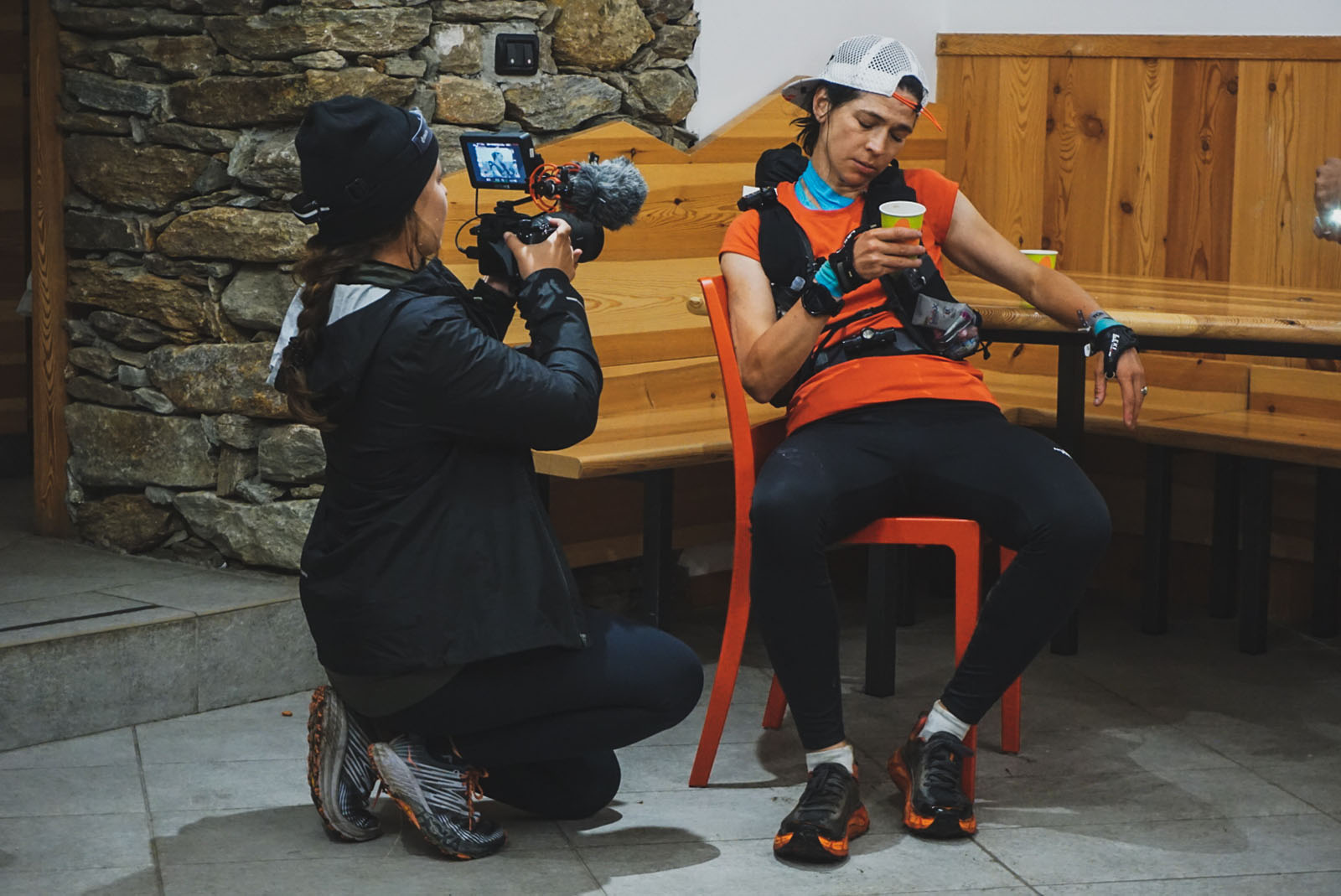
Carrie and Tim’s camera packages had to be light so they could move quickly through the mountainous terrain. They shot on mirrorless Sonys in XAVC SI, 10-bit 4:2:2 and had a small HD monitor, a shotgun mic, some extra batteries, a couple of lenses, and a cleaning kit that all fit into a backpack.

They also carried a first-aid kit and rain gear, along with a Garmin that had satellite texting capabilities so if they were out at night they could text each other to coordinate where they were repositioning or to make sure that no one had fallen off a cliff. Because when you’re running through steep mountains in the middle of nowhere in the dark, it’s not out of the realm of possibility.
A mountain of footage
Carrie and Tim usually do their own editorial, cutting on Adobe Premiere Pro. But for this project, they knew that they wanted to work with a creative partner.
Enter editor/partner Lucas Harger of Bruton Stroube/Outpost in St. Louis. Carrie had heard him on a podcast and had loved a sports documentary series called Prodigy that he’d cut for the short-lived Quibi platform.
“We connected right away,” Carrie says. “I told him about the film concept and he was very enthusiastic and had great insights and ideas. We interviewed a lot of editors and teams, and kept in touch with Lucas over the 18 months of development and it was just clear that they were the team we resonated with.”
In addition to Lucas being a great editor, he’s also a great curator of talent. His decision to assign editor Jazzy Kettenacker and story producer Elise Andert to the project proved to be an insightful power pairing. “It was also exciting to have more female voices on the film because that’s another example of a super underrepresented role in our industry,” Carrie says.
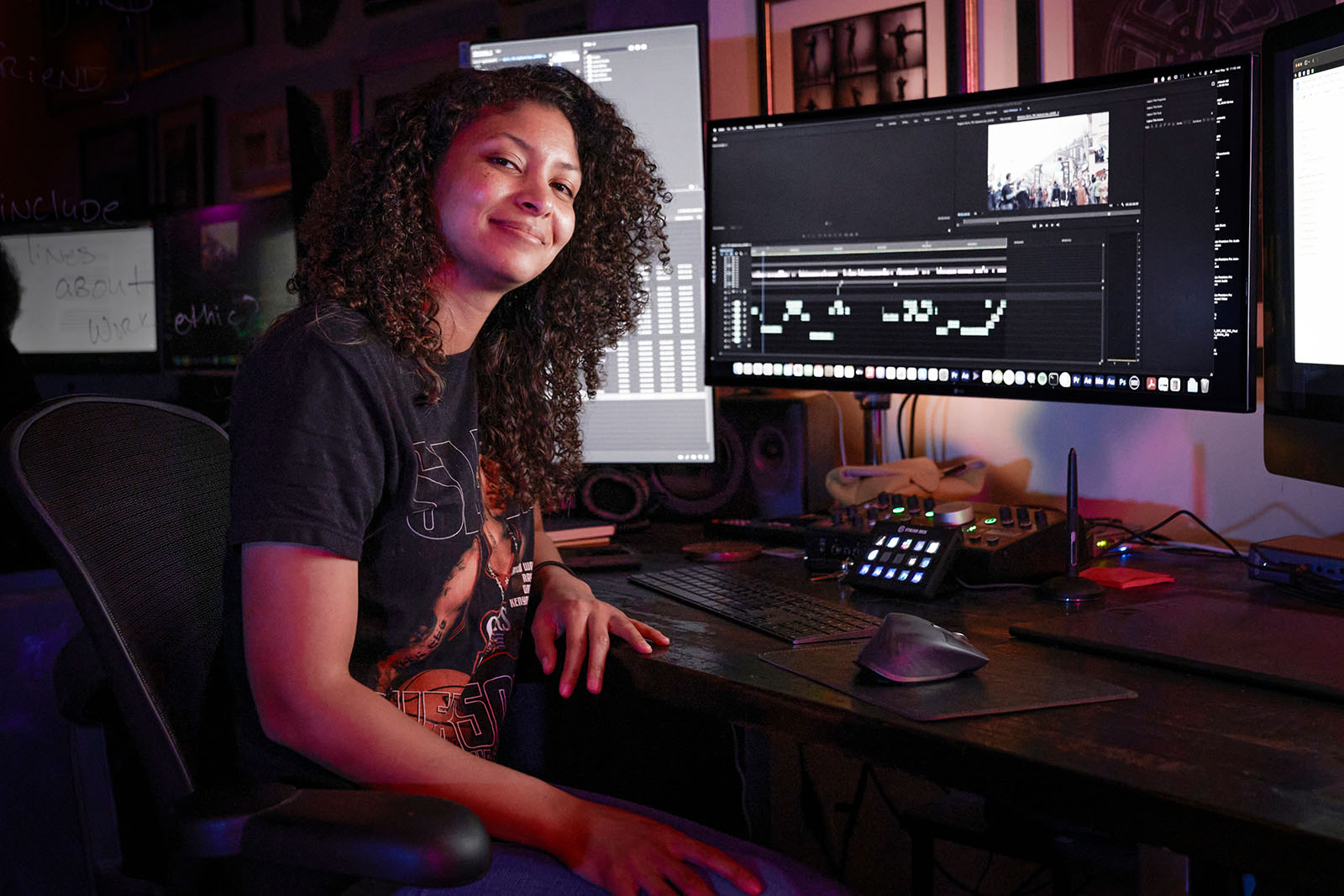
The team had shot a veritable mountain of footage between what they captured during the Tor des Glaciers in Italy, the Afghanistan footage, the interviews with the Afghan women in the U.S., and the interviews with Steph before and after the race. Beyond that, they were pulling in news footage of the events taking place in Afghanistan during the takeover, sourcing from international news outlets to present a balanced view.
“I’ve done a lot of long-form projects, and I can honestly tell you that this is the most footage I’ve ever dealt with,” Elise says. All told, there were 10.21 TB, equaling approximately 80 hours of footage.
The path forward
The first step was for Jazzy and Elise to watch everything that had been captured. That was in October 2021. “We just had to start by consuming it and figuring out what we were even working with,” Elise says. “Jazzy and I used the Production panel in Premiere Pro so that I had my story project and then she had her edit project. I started labeling and marking the interviews as much as possible.”
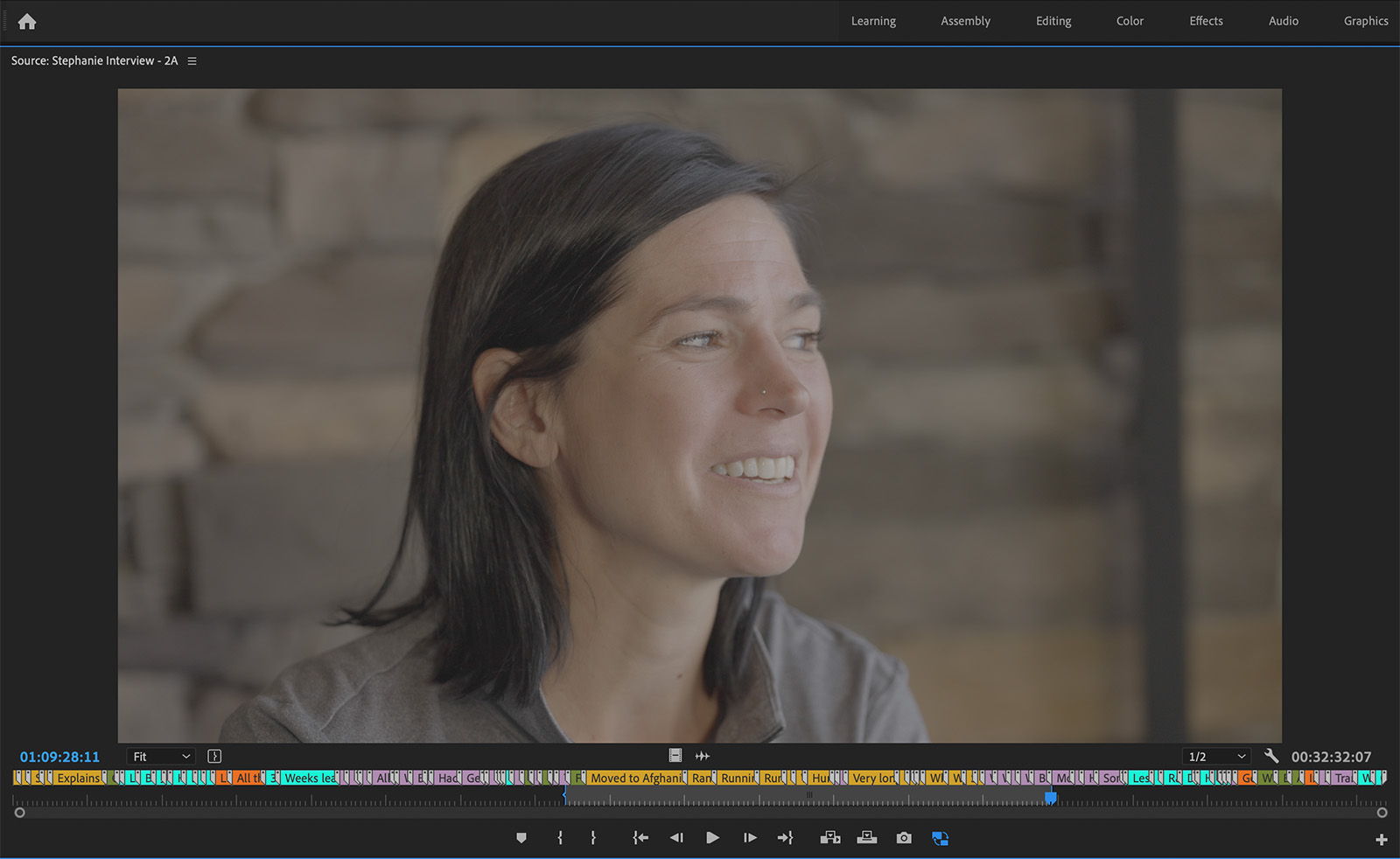
It was a labor-intensive part of the process because, like the race itself, there are no shortcuts; if there’s a day’s worth of footage, it takes a day to watch it. “There was a lot of running footage but you still have to watch it all because maybe there’s that one moment that we can build a scene around.”
Jazzy and Elise appreciated the ease with which they could access each other’s projects through the Production panel to see what selects they were choosing and compare notes. “I could use Elise’s stringouts to guide how I would cut a scene,” Jazzy says. “There might be a line that would help grow the story, and it was really handy.”
The team also relied heavily on the transcription feature in Premiere Pro. “It’s so good in the sense that you can type in your keywords and it throws you straight to your bite. We had ingested the material separately from Jazzy and Elise, so it made it really easy for them to find things that we wanted,” Carrie says.
With Elise and Jazzy working in St. Louis, Carrie and Tim working from Madison, The North Face clients in Europe, and the three main protagonists from the film in different cities, they relied heavily on Frame.io to streamline the conversations.
The mobile app worked really well for me because we’re out on the road all the time for other projects.
“We had so many people wanting different things from the project. A global brand with a large team and a non-profit…you know, there were a lot of people weighing in,” Carrie explains. “So to be able to put all your notes in exactly where you need them makes it so tidy and clear. And then the mobile app worked really well for me because we’re out on the road all the time for other projects, so I could very quickly answer a question, which made communication so efficient and kept a lot of wires from getting crossed.”
Elise agrees. “If they were outlining notes that involved adding anything, then I could track that sound bite and throw it on a timeline for Jazzy. And then I’d put a marker on it where I just listed the timecode that was on Frame.io so she could just quickly match and figure out what bite was for which note. I’ve never worked at a place that used Frame.io before, and I don’t know why everyone isn’t!”
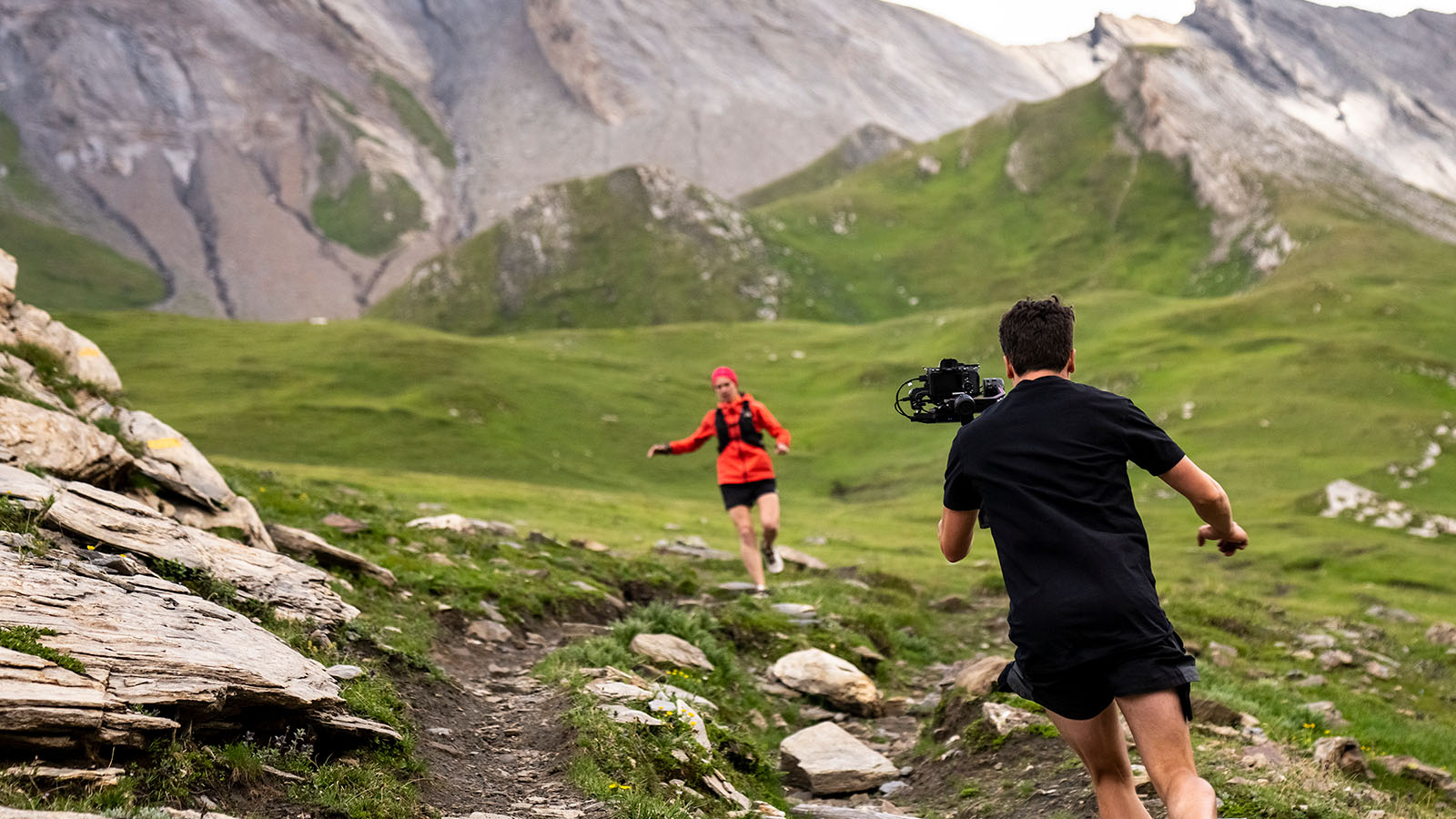
Not only were they using Frame.io as their feedback hub, they were also using it to upload and share assets. “We were getting batches of additional footage or photos or other things that we needed for the piece, after we had already sent the hard drives to editorial.”
“The women in the film had Go-Pros or iPhone footage and were sending that, or they’d find pictures from Free to Run. Jazzy set up a folder structure for us to upload those extras, and it was so helpful to have everything in one place that served as that one source,” Carrie adds.
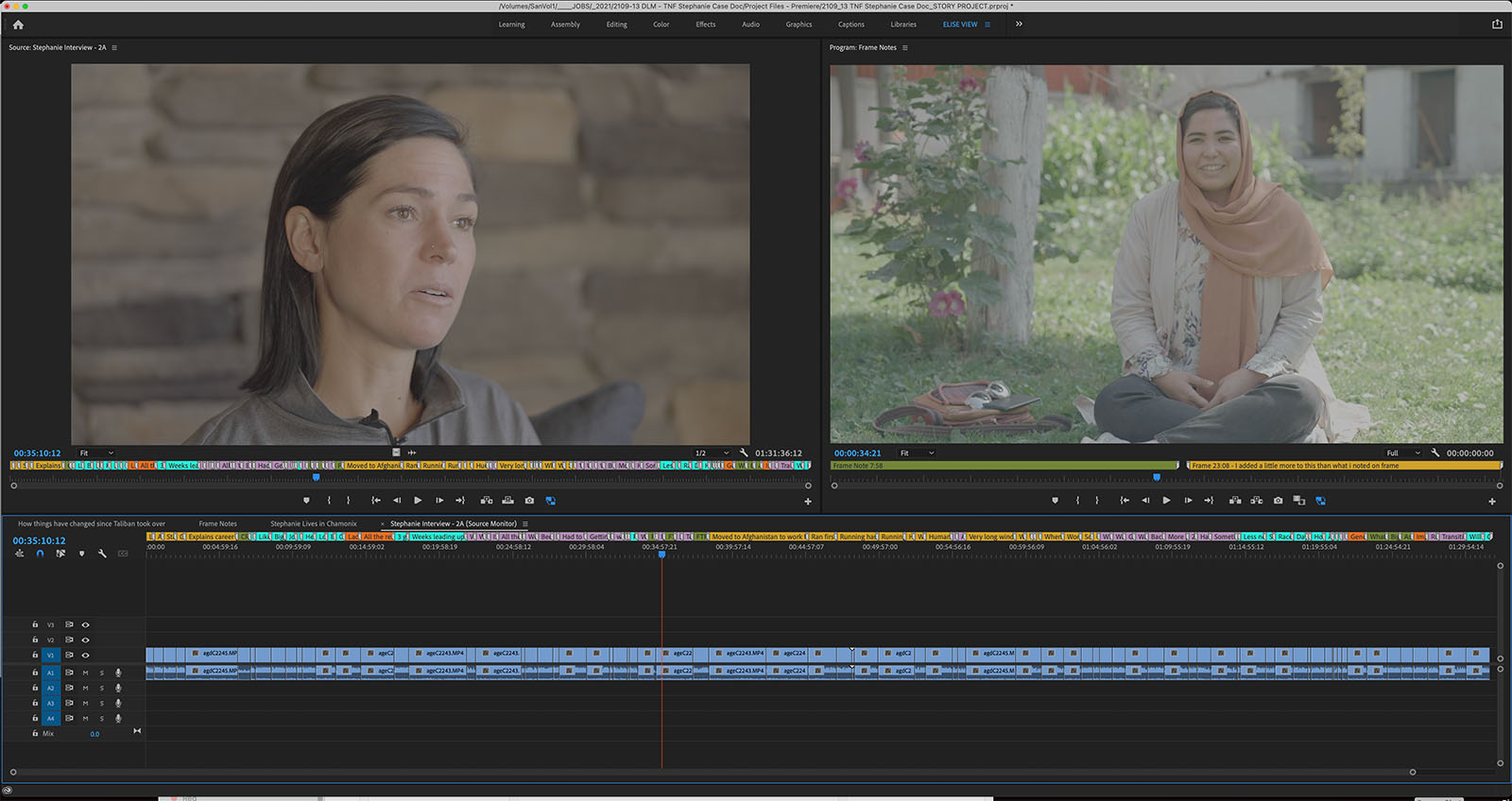
Jazzy edited in ProRes 422 HQ at 1920×1080. She also used After Effects for all the lower thirds, all the graphics, and to create the map. “I’ve been using Premiere Pro for about ten years now, and I love the Creative Cloud,” she says. “I love the convenience of being able to send a shot or sequence to After Effects, and editing audio with Audition is great, as well. My favorite tool right now is the speech to text—even for someone with an accent it was able to clearly pick up what they were saying.”
Elise and Carrie had both used Avid before going over to Premiere Pro, and both were impressed with the flexibility that it afforded them. “The fact that I can quickly change a clip within a sequence is great,” Elise says. “And the markers are more robust. I can type nearly a whole paragraph into a marker and when I pull up my markers window I can see it all. From a story perspective, to robustly label things and then be able to search within a bunch of markers made things really easy.”
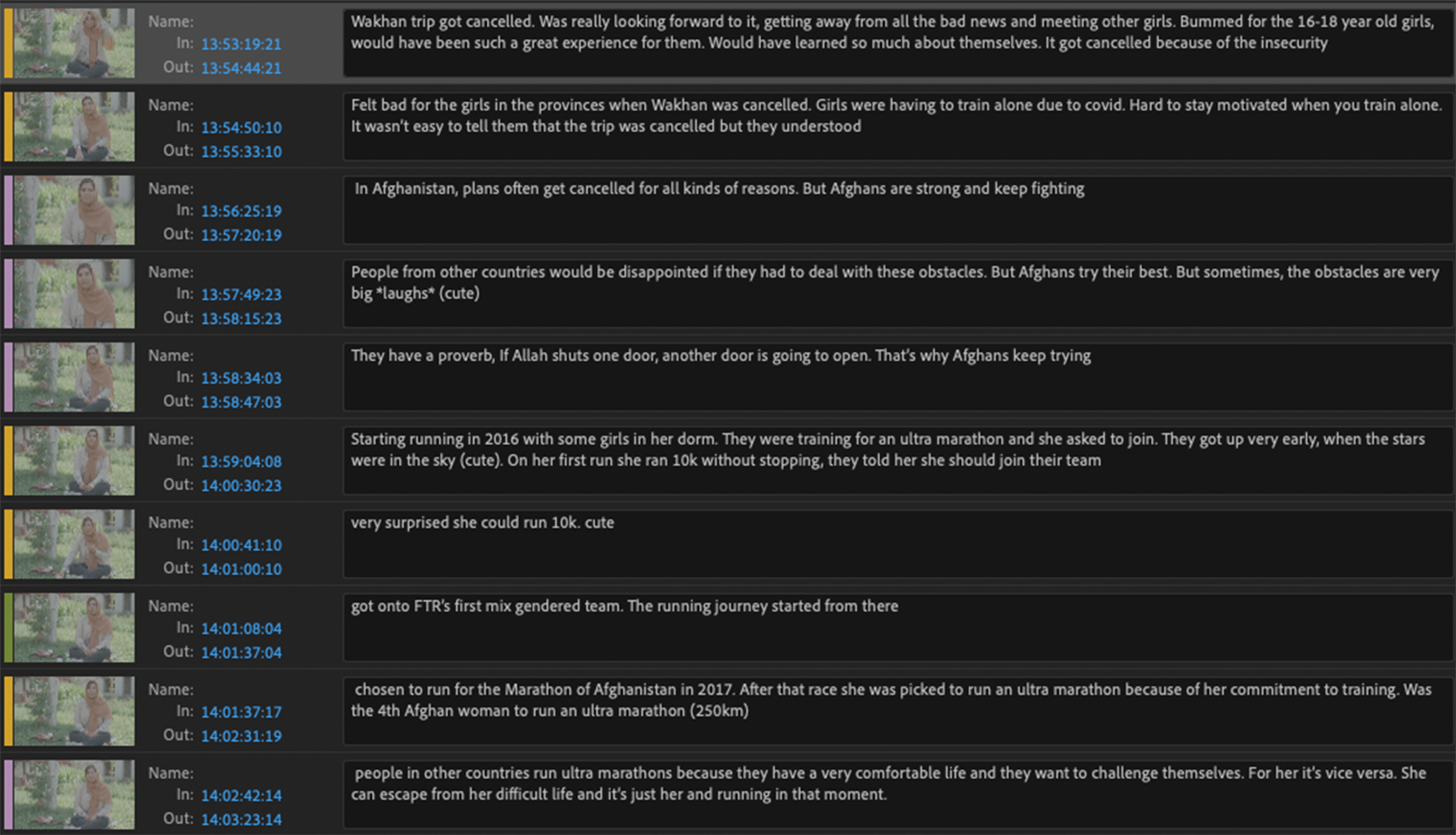
Like Elise, Carrie found that making the switch to Premiere Pro was remarkably easy. “It was so intuitive, and there were so many creatives using it, and so many good tutorials for learning it. We also love having the Creative Suite because we do a lot with photography and other media, too.”
Collaborative composing
With a film as powerful and emotional as this, the music had to be as thoughtfully composed as the visuals to drive the drama.
Cleod 9 in Washington D.C. worked remotely with the Wisconsin and St. Louis teams by building tracks for each music cue, loading each cue into its own folder, and creating one version of just the .wav file and the other of the scene with the track.
According to Tim, they would then provide notes throughout the cue, explaining instrument choices and why they built it the way they did. “We’d go into Frame.io and add our notes, pointing out timing within the scene where we thought it should feel more intense or lighter, and when we wanted something to ebb and flow differently,” he says.
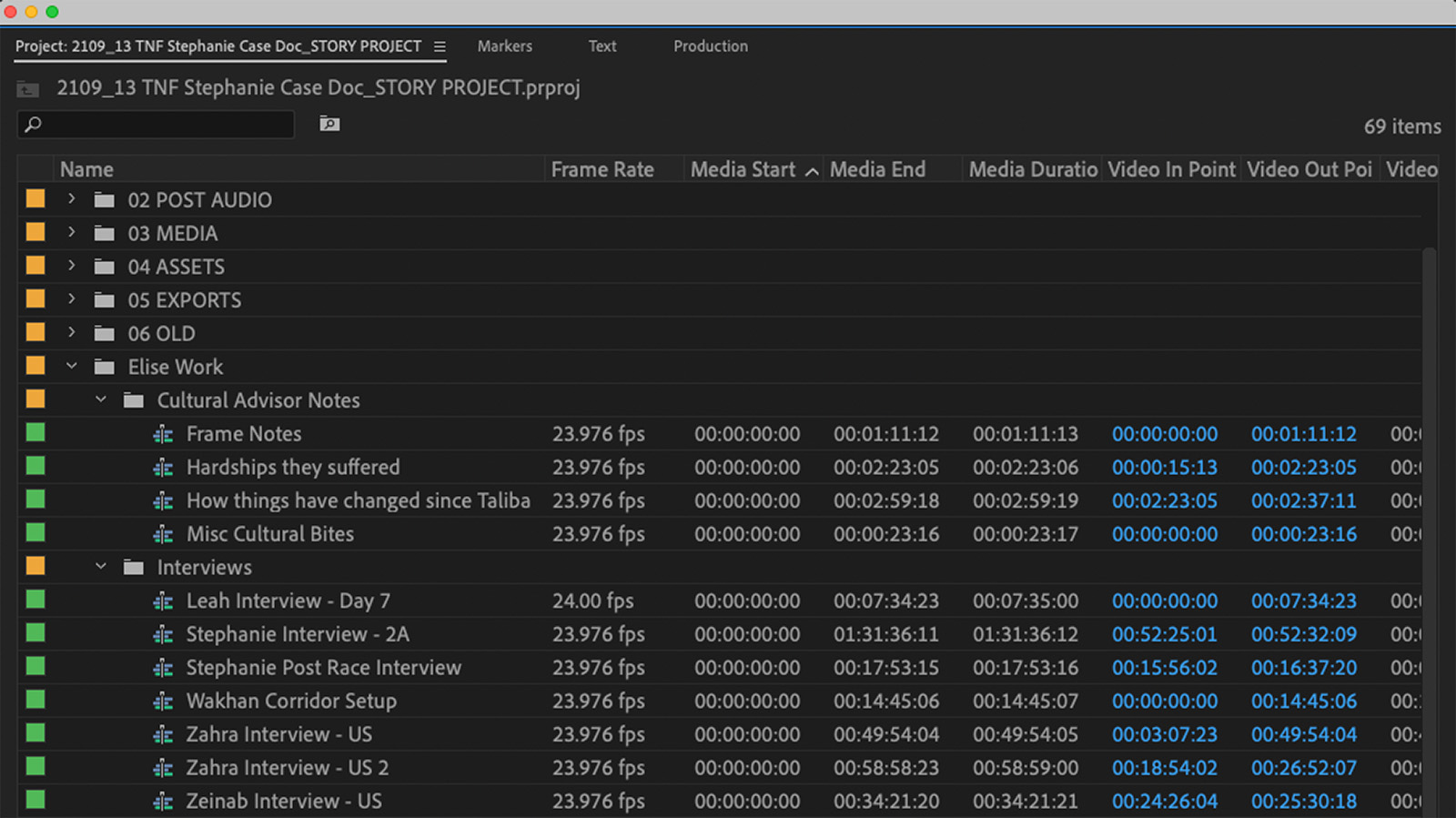
They went back and forth a couple of times in the process, keeping the older drafts within a folder structure on Frame.io so the team could reference the whole way through. When they had cues ready to go, they would then put them into a folder that Bruton Stroube could pull directly from to place into the overall edit.
“As directors of the film, it was incredibly helpful to have such a smooth workflow process and be able to provide such detailed notes for changes we wanted made to the cues,” Carrie says. “It was also great to have Jazzy in the Frame.io project so she could chime in as things were being developed, as well.
The power of women
In one gut-wrenching scene in the film, you see Steph questioning whether what she has created—with all the right intentions—has done more harm than good. The Free to Run organization has clearly empowered many women and girls in Afghanistan.
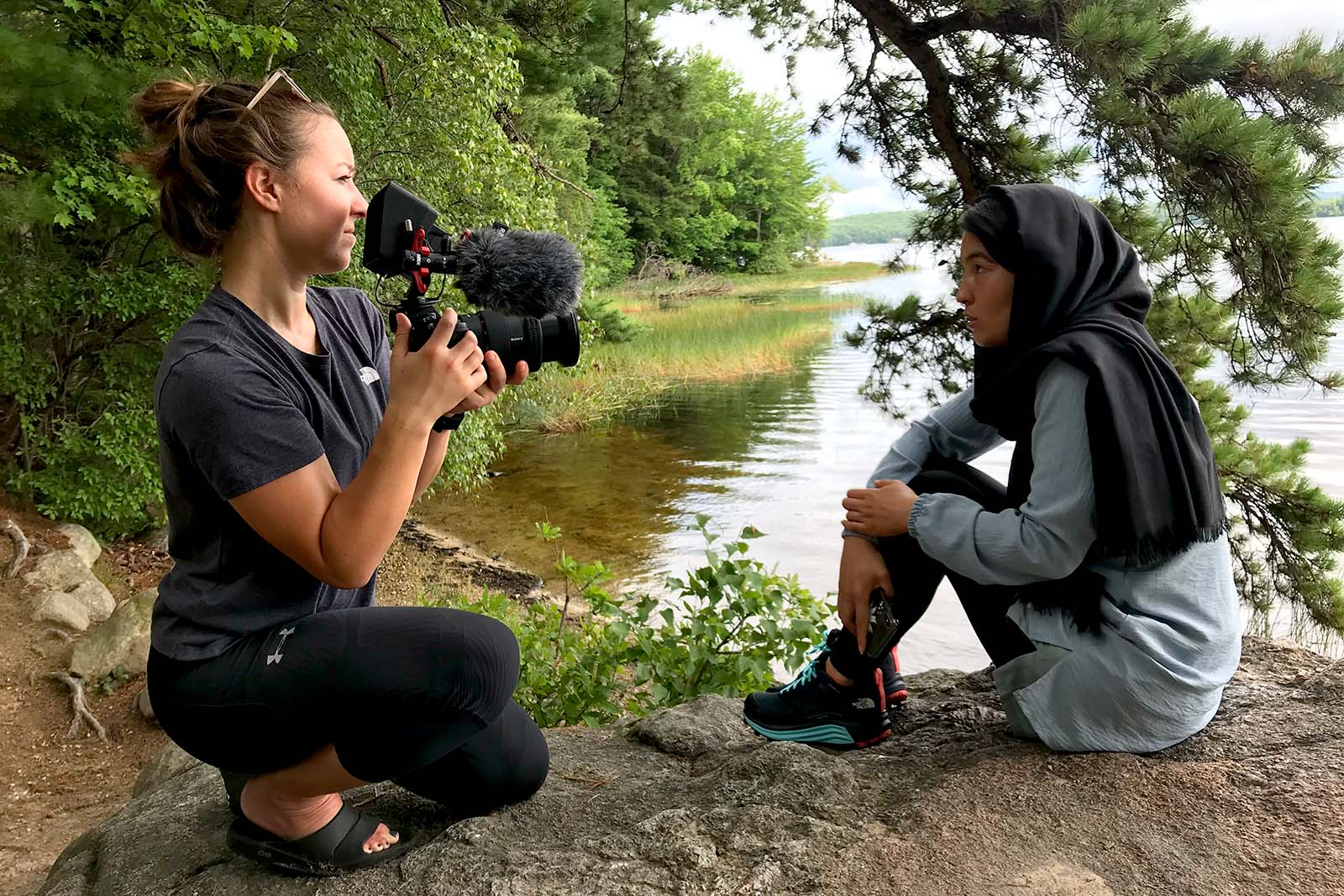
But as the Taliban strip away much of the freedom that women have fought to acquire over the past two decades, Steph wonders if the women she’s tried to help will be punished for their participation.
Likewise, the women who have safely left Afghanistan—one to attend Colorado State University and the other to New Hampshire on Fulbright scholarships—struggle with the grief of what their loved ones are living through in Afghanistan, and are committed to raising their voices on behalf of the Afghan people.
And yet, they all realize the importance of telling their stories. In the way that Steph fought through her exhaustion and pain during the Tor des Glaciers, they struggle through the pain of watching things play out in Afghanistan from afar and are committed to casting light on the oppression that exists in their country, again.
Talking to Carrie, Tim, Jazzy, and Elise, it’s clear that they’re moved by the story, and honored to be able to help share it with the world. All of them express similar sentiments when asked what they found the most rewarding about this project.
I hope people don’t forget Afghanistan.
For Elise, it’s about telling a story that most people don’t even think about—how a woman who’s living in a certain place can’t just go outside and run. “It’s cool to have worked on something that really matters, because I haven’t necessarily gotten the opportunity to do that a lot.”
For Jazzy, it’s about surfacing a story that might be forgotten in the midst of everything else that’s going on in the world—pandemics and wars and climate crises. “I hope people don’t forget Afghanistan.”
For Carrie and Tim, it’s about bringing a story to life that captures the weight of what real people are experiencing in other parts of the world. “It was humbling to see how vulnerable and resilient they were during such a horrible time. They were living through life-and-death situations while advocating for their country and sharing it all with a film crew in real time,” Carrie says. “That is such a powerful, strong thing to do in the midst of such an intense crisis, and we will always admire that deeply.”
“Our subjects committed so much energy to this film project and gave so much to this film. Our hope is that the film will allow a wide audience to take what these women have to say to heart and take steps to support the people of Afghanistan.”
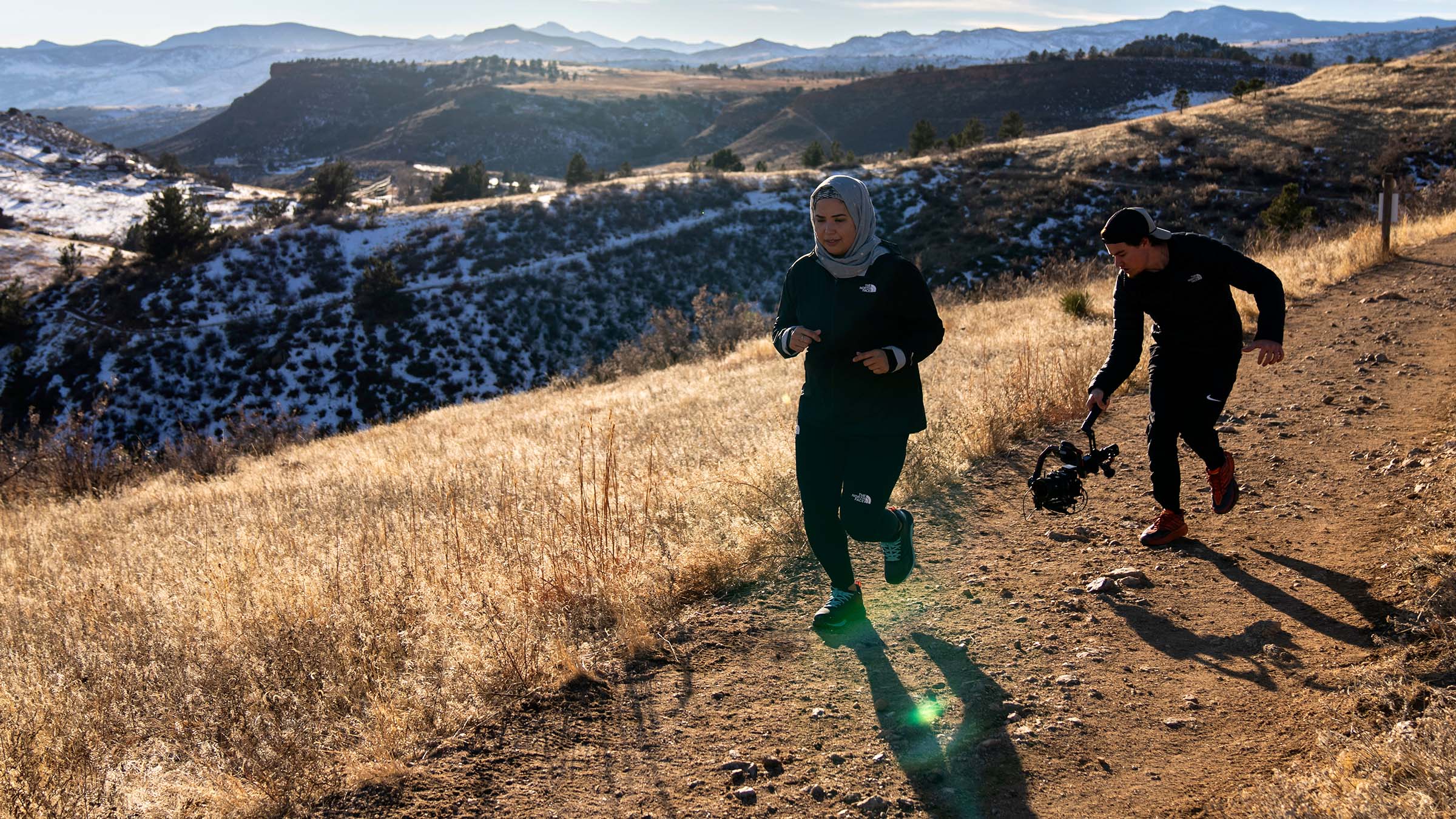
The final film for The North Face runs 30 minutes, which zooms by because so much is packed into it. After this version goes live, the team plans to go back into the vast amount of footage they’ve already captured to create a feature-length version, with the intention of submitting to festivals.
In the meantime, Carrie and Tim are so grateful to all the women involved in making this film, and to The North Face for amplifying their stories. “What’s so exciting about having them as a partner is being able to get it out to more people, so as many people as possible can see this story,” she says. “The women in the film want the world to not forget. They want the world to hear. If all we can accomplish is to step back and let them raise their voices, then I can’t ask for anything more from a career.”
And for us at Frame.io and Adobe, we can’t imagine anything better than making tools that help people tell powerful stories.

